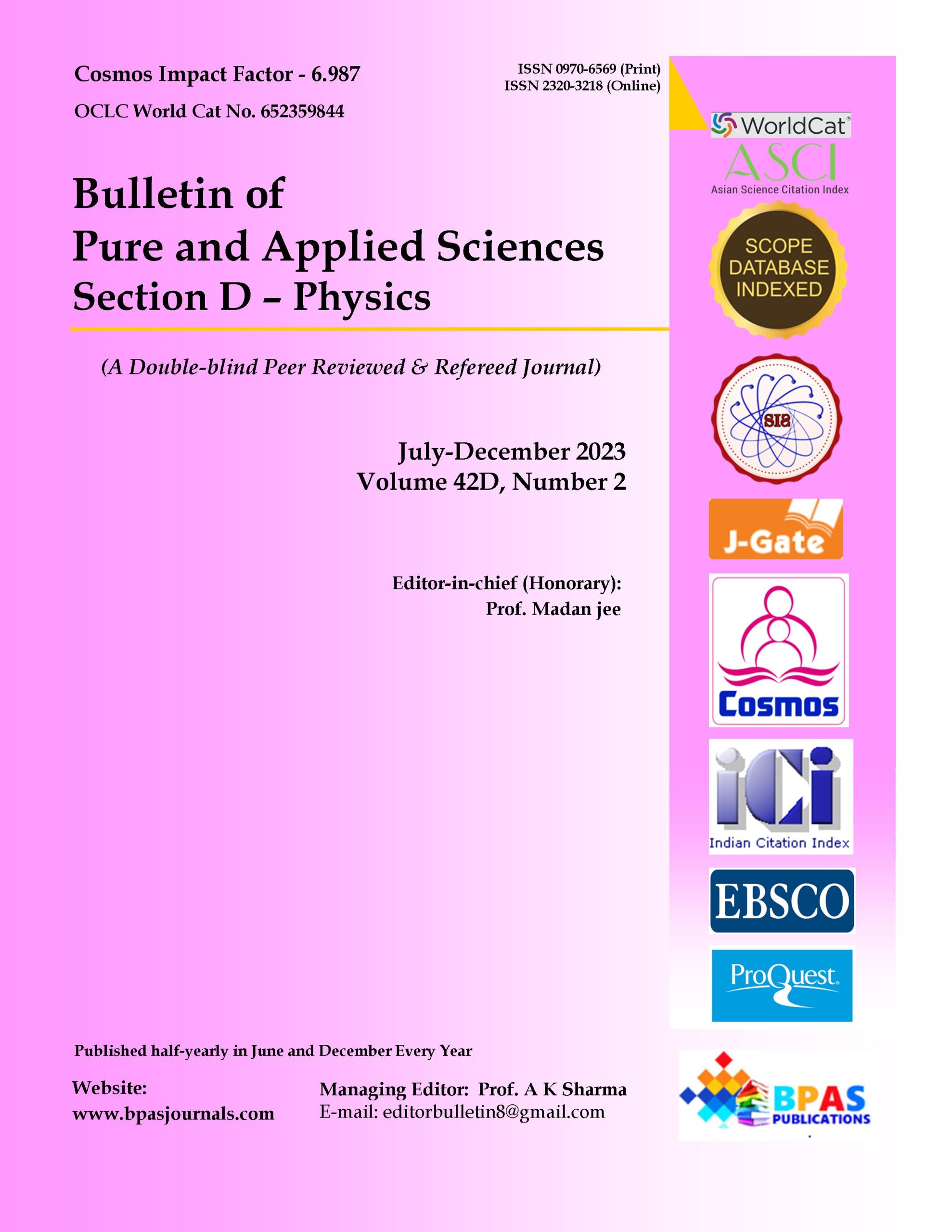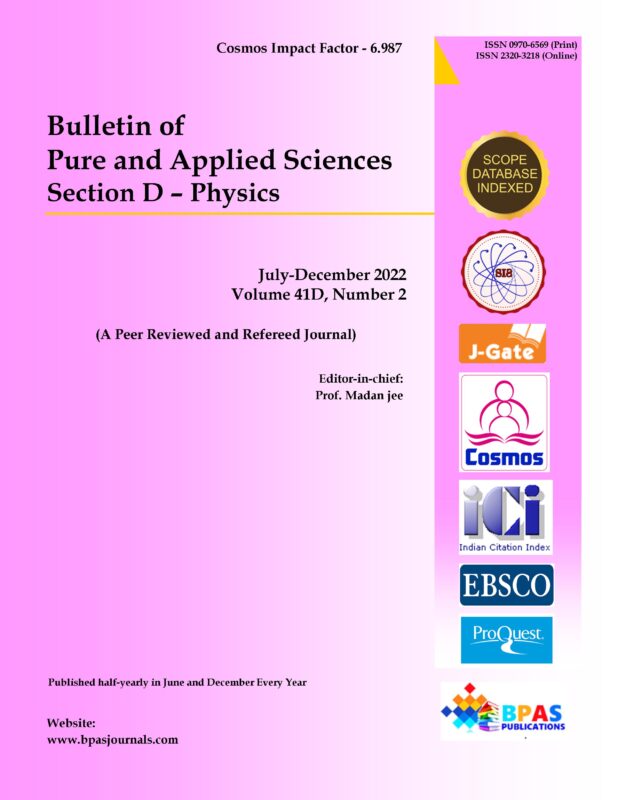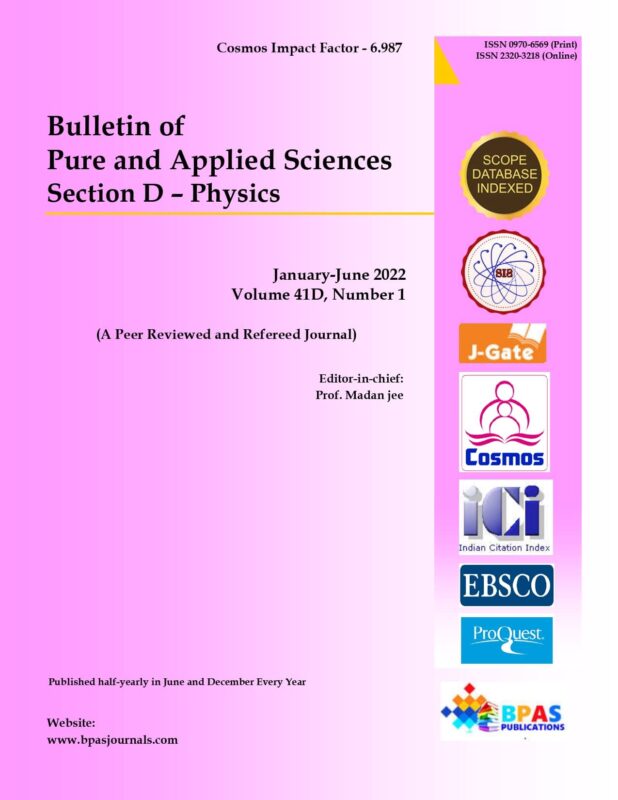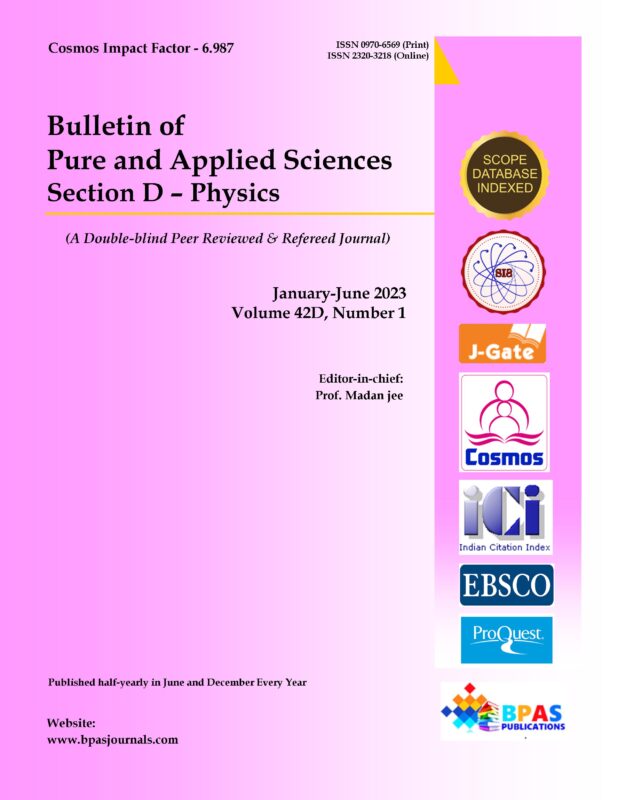Asymmetric Transmission in Diffractive Chiral Metasurfaces Consisting of Nanoantennas
9.38$
1Shivam Krishana* and 2Nabin Kumar
| Bulletin of Pure and Applied Science
Physics, Vol.42D No.2, July-December 2023 P.89-92 |
| Original Research Article |
Categories: 42D(2), JUL-DEC 2023, BPAS-Physics
Description
Description
1Shivam Krishana* and 2Nabin Kumar
| Author’s Affiliations: | 1Research Scholar, University Department of Physics, B.N. Mandal University, Madhepura, North Campus, Singheshwar, 852128, Bihar, India.
E-mail: shivampluskrishna@gmail.com 2University Department of Physics, B.N. Mandal University, Madhepura, North Campus, Singheshwar, 852128, Bihar, India. E-mail: drnabinkumar02@gmail.com
|
| *Corresponding author: | Shivam Krishana
Research Scholar, University Department of Physics, B.N. Mandal University, Madhepura, North Campus, Singheshwar, 852128, Bihar, India. E-mail: shivampluskrishna@gmail.com
|
Abstract
| ABSTRACT | We have studied the asymmetric transmission in diffractive chiral metasurfaces consisting of nanoantennas. The study was made of lattice plasmon modes on the phenomenon of asymmetric transmission in chiral two dimensional arrays of plasmonic nanoparticles. It was demonstrated that asymmetric transmission resulted from contribution of higher order diffracted waves. It was shown that the isolated nanostructures has a fourfold rotational symmetry, the diffractive metasurfaces exhibited asymmetric transmission for normal incidence light within spectral range for which lattice plasmon modes were supported. It was found that lattice plasmon modes played role in enabling symmetric transmission in diffractive chiral metasurfaces. The symmetric transmission mechanism is due to different lattice plasmon mode excitation efficiencies of left circularly polarized and right circularly polarized and right circularly polarized light. The excitation efficiencies are controlled by tailoring the nano particles in plan distribution of scattered light for circularly polarized excitation and its alignment with the inplane diffraction orders of the metasurfaces. The phenomenon for a metasurface composed of an array of a chiral nanoparticles consisting of four nanoantennas. It was shown that the Rayleigh anomaly condition where the asymmetric transmission effect was strongest and metasurfaces supported lattice plasmon modes. It was found that the difference in the inplane scattered intensity varied as a function of the inplane angle around the nanostructure, rotating the nanostructure in the plane of the metasurface. The obtained results found in good agreement with previously obtained results. |
| KEYWORDS | Asymmetric, Transmission, Chiral, Nanoantennas, Metasurface, Lattice Plasmon, Arrays, Nanoparticles, Excitation, Scattering. |




